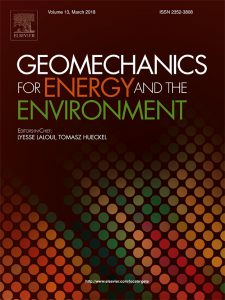5. Shale Properties as a Function of Geologic Burial and Compaction
Lecturer
Content
Clay-rich sediments at the seafloor have porosity over 70%. As these sediments are buried they become stiff muds,
This lecture will present observations collected over many years on an extensive library of preserved shales with burial depths ranging from <200m to almost 4000m. Certain properties are found to correlate almost exclusively with porosity, independent of clay type and exact clay content, as long as clay content is greater than ~50%. Other properties are a function not only of porosity but also of clay type (smectite vs. illite vs. kaolinite). A brief overview will be provided of the effects of increasing silt content. The properties and behaviors of resource shales will be introduced and contrasted with those of clay-dominated shales.
The following topics will be covered:
•
• Changes in physical structure, from
• Porosity and pore size distribution
• Void ratio vs. effective stress (to 40 MPa); similarities and differences to soil mechanics
• Definition of ‘compaction state’
• Permeability; pressure diffusivity
• Entry pressure for non-wetting phase (air, CO2)
• Stiffness (modulus)
• Shear strength and undrained stress paths; brittle vs. ductile, dry-side vs. wet-side
• Apparent OCR and apparent maximum past stress; diagenesis
• Fabric alignment; development of anisotropy
• Response to water and brine contact: swelling, osmotic effects
• Influence of clay type
• Influence of silt content
• Resource shales (gas shales) vs claystone shales; similarities and differences



